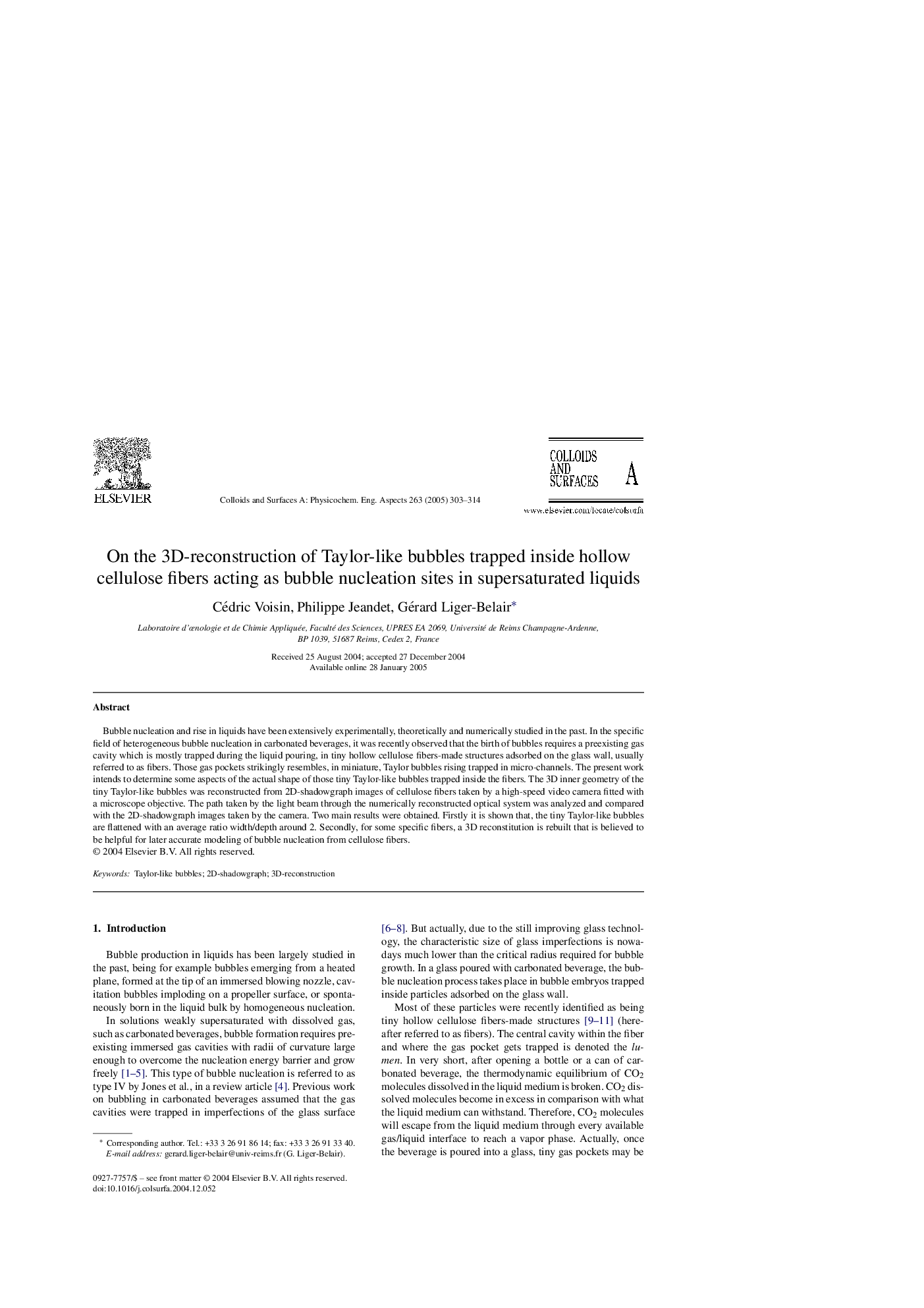| Article ID | Journal | Published Year | Pages | File Type |
|---|---|---|---|---|
| 9675778 | Colloids and Surfaces A: Physicochemical and Engineering Aspects | 2005 | 12 Pages |
Abstract
Bubble nucleation and rise in liquids have been extensively experimentally, theoretically and numerically studied in the past. In the specific field of heterogeneous bubble nucleation in carbonated beverages, it was recently observed that the birth of bubbles requires a preexisting gas cavity which is mostly trapped during the liquid pouring, in tiny hollow cellulose fibers-made structures adsorbed on the glass wall, usually referred to as fibers. Those gas pockets strikingly resembles, in miniature, Taylor bubbles rising trapped in micro-channels. The present work intends to determine some aspects of the actual shape of those tiny Taylor-like bubbles trapped inside the fibers. The 3D inner geometry of the tiny Taylor-like bubbles was reconstructed from 2D-shadowgraph images of cellulose fibers taken by a high-speed video camera fitted with a microscope objective. The path taken by the light beam through the numerically reconstructed optical system was analyzed and compared with the 2D-shadowgraph images taken by the camera. Two main results were obtained. Firstly it is shown that, the tiny Taylor-like bubbles are flattened with an average ratio width/depth around 2. Secondly, for some specific fibers, a 3D reconstitution is rebuilt that is believed to be helpful for later accurate modeling of bubble nucleation from cellulose fibers.
Keywords
Related Topics
Physical Sciences and Engineering
Chemical Engineering
Colloid and Surface Chemistry
Authors
Cédric Voisin, Philippe Jeandet, Gérard Liger-Belair,
